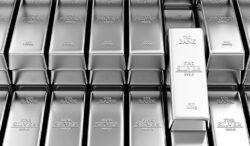Now that the world is having second thoughts about net zero, attention is turning to viable solutions. It’s not like they’ve given up on climate change science. Today, I want to show you why nuclear power will be the biggest winner in the race to supply net zero power… eventually.
The first thing to mention is of course, electrification. If we can convert our electricity supply to net zero and convert our energy demand to electricity, then we really would get a long way towards cutting most emissions.
And the electrification of everything is already underway, however badly things are going. Which means we’re going to need a heck of a lot more of electricity to keep the economy going.
What energy source can deliver that much power in the way we need?
I believe nuclear is the best option. So let’s dig into why…
The first number is carbon equivalent emissions per unit of power. In other words, how much supposed pollution to produce a gigawatt hour of electricity.
According to Our World in Data, nuclear leads the way with three tonnes. Wind and solar produce four and five respectively. Biomass more than 20 times as much.
So nuclear is the outright leader by that metric.
The next question is safety. It’s not like we want to replace one form of environmental disaster with another.
So, how does nuclear power’s safety rank?
It comes in second, with 0.03 deaths per terawatt hour of electricity, behind solar power’s 0.02 deaths per terawatt hour, but ahead of wind, which offers 0.04 deaths per terawatt hour.
And that’s including deaths from Chernobyl and Fukushima, the latter of which has a direct death toll of one possible death, but thousands of indirect deaths due to the stress of relocation, many of which were exacerbated by the tsunami.
Adjust for the rather problematic story of Chernobyl and the rather broad definition of deaths from Fukushima and you have nuclear in top spot, again.
Biomass and hydropower are a distant fourth and fifth on both carbon and safety measures because of pollution and dam failures.
Assuming we care about both safety and carbon emissions, unlike those who advocate culling the human population to solve the problem of climate change, nuclear wins because it produces the better balance between deaths and emissions.
Of course, nuclear, wind and solar are so close that it depends entirely on the assumptions you make. So let’s consider some other metrics.
The next one to consider is reliability.
Solar and wind power are intermittent. Nuclear is not.
Solar and wind power cannot be controlled. Nuclear power can.
Nuclear power works at night, solar does not.
I wonder what the safety figures for a grid using solar and wind would look like if this intermittency was included. What would fatalities at hospitals and on roads look like if we didn’t have enough electricity when the sun didn’t shine and the wind didn’t blow…?
Of course the solution for wind and solar is power storage. Nuclear doesn’t need such storage. So, how much would building a power storage network add to wind and solar’s emission and safety figures?
Well, pumped hydro is one option for energy storage. If we take hydropower’s moderate fatality and emissions figures and add them into the mix for solar and wind, the numbers would shift further behind nuclear.
Of course nuclear does require storage of its waste. But nobody seems to have died from that nuclear waste…
What about space? There’s no point paving paradise to put up a solar farm or wind farm.
Renewable energy is famously spread out. Nuclear power requires 31 times less space than solar facilities and 173 times less than wind farms.
Then there’s the question of resource intensity.
Nuclear requires just over 5,000 kilograms of resources per megawatt. Solar closer to 7,000, onshore wind over 10,000 and offshore wind over 15,000.
That’s a heck of a lot of mining…
What about geopolitics? Energy security has proven to be rather important over the past year…
Well, China dominates renewable energy’s supply chain while Russia controls about half of the nuclear industry’s operations. However, nuclear power plants tend to have a great deal of fuel kept on site – up to two years’ worth. And adding more storage capacity is dramatically easier than for other fuels because of nuclear fuel’s energy density.
What about cost?
Well, because of the storage and extra capacity needed to cover renewables’ intermittency, as well as the cost of manyfold more land, it’s a question of how you compare the options.
But let’s just say that France, which has 70% nuclear, has electricity prices around half of Germany, which is famous for phasing out nuclear and rolling out renewables. Take Europe’s top ten nuclear power users as a percent of their energy mix and you’ll find seven of them have below-the-average electricity prices…
It’s also a question of the vast regulatory costs imposed on building nuclear power plants, much of which is likely to be unnecessary.
Now, admittedly, even some politicians have figured all this out. Around the world, nuclear went from less popular than fossil fuels to a crucial part of the net zero energy mix in the space of a few years. Many nations are backtracking on phase-outs and adding more plants instead.
But even if the politicians have finally figured it out, it’ll take more than a decade to get the nuclear power revolution back on track. What are we going to do in the meantime?
There simply aren’t many viable options.
Rolling out a renewable energy grid would require an impossible amount of resources, for which electric vehicles (EVs) and other types of electrification have to compete. It’d also take extraordinary amounts of time. And that’ll still leave us with intermittent and unreliable energy. Storage would add a further challenge.
No, the solution is a fossil fuel comeback of extraordinary proportions. Not just for another winter, as we saw over the past two years, but for the years it takes to get nuclear up and running.
This would be a rather dramatic turnaround in the fate of that industry too…
That’s why, this week, my friend James Allen is revealing how investors could position themselves to potentially profit from the revival of fossil fuels – keep an eye out for more details.
Until next time,

Nick Hubble
Editor, Fortune & Freedom



